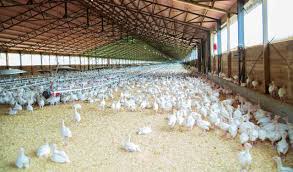The U.S. poultry industry is facing a major challenge as bird flu continues to spread, infecting farms multiple times and costing the government hundreds of millions in payouts. Since 2022, at least 56 poultry farms, including chicken and turkey operations, have been reinfected at least twice, while 17 farms have suffered three outbreaks, according to data from the U.S. Department of Agriculture (USDA). Some farms have even been hit four times.
The financial toll is staggering—more than $365 million has been paid to farms that have been reinfected. Overall, the USDA has spent over $1.1 billion compensating poultry producers for culling and replacing their flocks. This ongoing crisis has pushed U.S. egg prices to record highs, with the USDA predicting another 41% increase this year.
The Push for Stronger Biosecurity and Vaccination
In response, the U.S. government has launched a $1 billion plan focusing on improving biosecurity measures. The plan includes free biosecurity audits, reducing regulations, investing $100 million in vaccines and treatments, and increasing payouts for farms that cull infected flocks.
Biosecurity practices—such as sanitizing equipment, restricting farm access, and regular testing—are crucial in controlling outbreaks. However, experts argue that these measures alone are not enough. Large, densely packed poultry farms provide ideal conditions for the virus to spread. Additionally, shared farm workers may inadvertently carry the virus between farms.
Should Poultry Be Vaccinated?
Scientists are calling for widespread poultry vaccination to minimize outbreaks and prevent potential pandemics. Bird flu, if it mutates to spread among humans, could have devastating consequences.
Vaccinating egg-laying hens, which live much longer than broilers, could help stabilize egg supplies and prevent price spikes. However, challenges remain, including the need for frequent testing and restrictions on exporting vaccinated poultry products. Advances in technology, such as improved antibody detection tests, could help address these issues.
The Future of Poultry Farming
The recurring outbreaks highlight the need for fundamental changes in poultry farming. Experts suggest reducing farm sizes, improving ventilation, and exploring alternative farming methods. Some even advocate for transitioning away from large-scale poultry farming altogether, promoting alternative agricultural practices such as bean or mushroom farming.
As long as the industry relies on the same intensive farming methods, outbreaks—and subsequent price hikes—will likely continue. While biosecurity measures are essential, experts insist that long-term solutions, including vaccination and industry-wide changes, must be considered to protect both poultry farmers and consumers.
Download Eggora Poultry App: https://www.eggora.com/download-app
